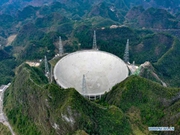

Pop quiz: How does an inland city deep in Southwest China boost its international trade using transportation that's cheaper than air but faster than sea?
In 2013, the first Chengdu- Łódź freight train departed from the capital of southwest China's Sichuan province. Few expected that within five years, Chengdu would become the hub of the New Eurasian Land Bridge, connecting the Pacific and Atlantic oceans.
By September 2018, five years after the Belt and Road Initiative was first put forward by Chinese President Xi Jinping, over 2,700 freight trains transported a total of $10 billion worth of goods including electronics, automobile parts, clothes, and food products back and forth from Chengdu to Europe, Central Asia, and Southeast Asia.
The freight rail lines have become an intercontinental rail network connecting Chengdu with 20 international cities including Łódź of Poland, Nuremberg of Germany, Tilburg of Netherlands and 14 Chinese cities including Shanghai and Shenzhen.
It's from coastal cities like Shenzhen where China's reform and opening up began forty years ago. In comparison, development and the opening up process for western China's inland cities such as Chengdu progressed at a much slower pace. However, with the outreach of its international freight train network, Chengdu has managed to break its geographic limitations and has bridged itself with the coast through its rail-sea cargo route to Southeast Asia and cities like Shanghai, Ningbo, and Tianjin, reaching even further east to South Korea and Japan.

Photo shows containers in a railway container center in Qingbaijiang District in Chengdu, capital of southwest China's Sichuan Province. This container center serves as a railway logistic hub in southwest China. (Xinhua/Xue Yubin)
During a research trip made by Chinese Vice Premier Han Zheng to the Qingbaijiang Railway Port Area of the China (Sichuan) Pilot Free Trade Zone in Chengdu on Oct. 9, Han said the construction of land-sea transport in western regions should advance through the Chengdu-Europe express railway service. This would achieve connectivity and lift the level of development and opening-up throughout western regions.
With a substantial boost in railway exports, tech giants like Dell and TCL have seen rapid growth in production output from their Chengdu bases, with increases of 140 percent and 99 percent respectively.
"International freight trains have opened a strategic gateway to strengthen cooperation of Chengdu and China with countries involved in the Belt and Road Initiative," said Zeng Yi, Director of the International Relationship Department of the Chengdu International Railway Port Committee. She continued, "Chengdu, an inland city not geographically bordering any countries or coastline, has become a forefront of China's further opening up to the south and west.”
To plan ahead, Chengdu International Railway Port will work with more countries and cities to extend the reach of its freight train routes. Trains running from Bremen to Chengdu and trains running from Chengdu to Budapest will soon begin trial operations. Up north, more return trips to and from Russia are also scheduled to boost trade of wood and paper pulp.
However, Chengdu is not only focused on the business of transportation. Integrated development of transportation, ports, logistics, trade, finance, and industry is coming to Sichuan Province. Chengdu, with the surrounding Chengdu Plain historically known as the "Country of Heaven," showcases its new calling card as a modern trade hub that has transformed its international freight train network from "economic transportation" to "transportation economy.”

 Award-winning photos show poverty reduction achievements in NE China's Jilin province
Award-winning photos show poverty reduction achievements in NE China's Jilin province People dance to greet advent of New Year in Ameiqituo Town, Guizhou
People dance to greet advent of New Year in Ameiqituo Town, Guizhou Fire brigade in Shanghai holds group wedding
Fire brigade in Shanghai holds group wedding Tourists enjoy ice sculptures in Datan Town, north China
Tourists enjoy ice sculptures in Datan Town, north China Sunset scenery of Dayan Pagoda in Xi'an
Sunset scenery of Dayan Pagoda in Xi'an Tourists have fun at scenic spot in Nanlong Town, NW China
Tourists have fun at scenic spot in Nanlong Town, NW China Harbin attracts tourists by making best use of ice in winter
Harbin attracts tourists by making best use of ice in winter In pics: FIS Alpine Ski Women's World Cup Slalom
In pics: FIS Alpine Ski Women's World Cup Slalom Black-necked cranes rest at reservoir in Lhunzhub County, Lhasa
Black-necked cranes rest at reservoir in Lhunzhub County, Lhasa China's FAST telescope will be available to foreign scientists in April
China's FAST telescope will be available to foreign scientists in April